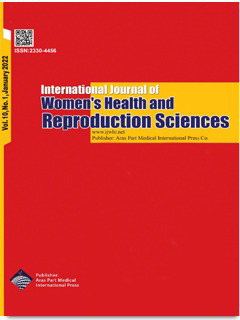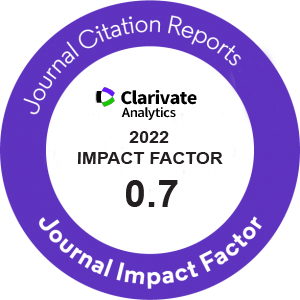| Original Article | |
| Evacuating Uterine Contents before Operative Hysteroscopy in Patients With Active Uterine Bleeding: A Randomized Clinical Trial | |
| Manizheh Sayyah-Melli1, Maryam Kazemi-Shishavan1,2, Nooshin Behravan1, Parvin Mostafa Gharabaghi1, Vahideh Rahmani1 | |
| 1Women’s Reproductive Health Research Center, Tabriz University of Medical Sciences, Tabriz, Iran 2Department of Community and Family Medicine, Faculty of Medicine, Tabriz University of Medical Sciences, Tabriz, Iran |
|
|
IJWHR 2022; 10: 057-062 DOI: 10.15296/ijwhr.2022.11 Viewed : 1349 times Downloaded : 971 times. Keywords : Hysteroscopy, Uterine bleeding, Metrorrhagia, Endoscopy |
|
| Full Text(PDF) | Related Articles | |
| Abstract | |
Objectives: Concurrent bleeding or existing clots usually obscure the vision field and decrease the hysteroscopy success rate. Therefore, any efforts made to have a clear view during the hysteroscopy will improve the diagnostic or treatment outcomes. We examined the effect of preoperative clot evacuation on hysteroscopy related outcomes. Materials and Methods: In this parallel-group randomized clinical trial conducted in Al-Zahra hospital, Tabriz, Iran, 114 women with uterine bleeding were randomly assigned to receive either clot evacuation before standard operative hysteroscopy or after that from December 2018 to September 2019. The study outcomes were the clarity of vision, amount of bleeding, the volume of required distension media, duration of the procedure, and postoperative complications. Results: There were statistically significant differences in the frequency of the clear vision (P < 0.001), the severity of bleeding, mean procedure time (P < 0.001), mean used distension media and the mean postoperative hematocrit levels in favour of women with pre-hysteroscopy intrauterine evacuation. There was no difference in in-hospital stay and anaesthetic complications among the two groups. The procedure was successfully performed on all participants of both groups with no post-operative complications. Conclusions: Removal of clots and other uterine contents before the insertion of the hysteroscope rendered better and faster access to the uterine wall to observe existing abnormalities. This additional surgical step could significantly impact surgical and clinical outcomes. |
Cite By, Google Scholar
Google Scholar
PubMed
Online Submission System
 IJWHR ENDNOTE ® Style
IJWHR ENDNOTE ® Style
 Tutorials
Tutorials
 Publication Charge
Women's Reproductive Health Research Center
About Journal
Publication Charge
Women's Reproductive Health Research Center
About Journal
Aras Part Medical International Press Editor-in-Chief
Arash Khaki
Mertihan Kurdoglu Deputy Editor
Zafer Akan























